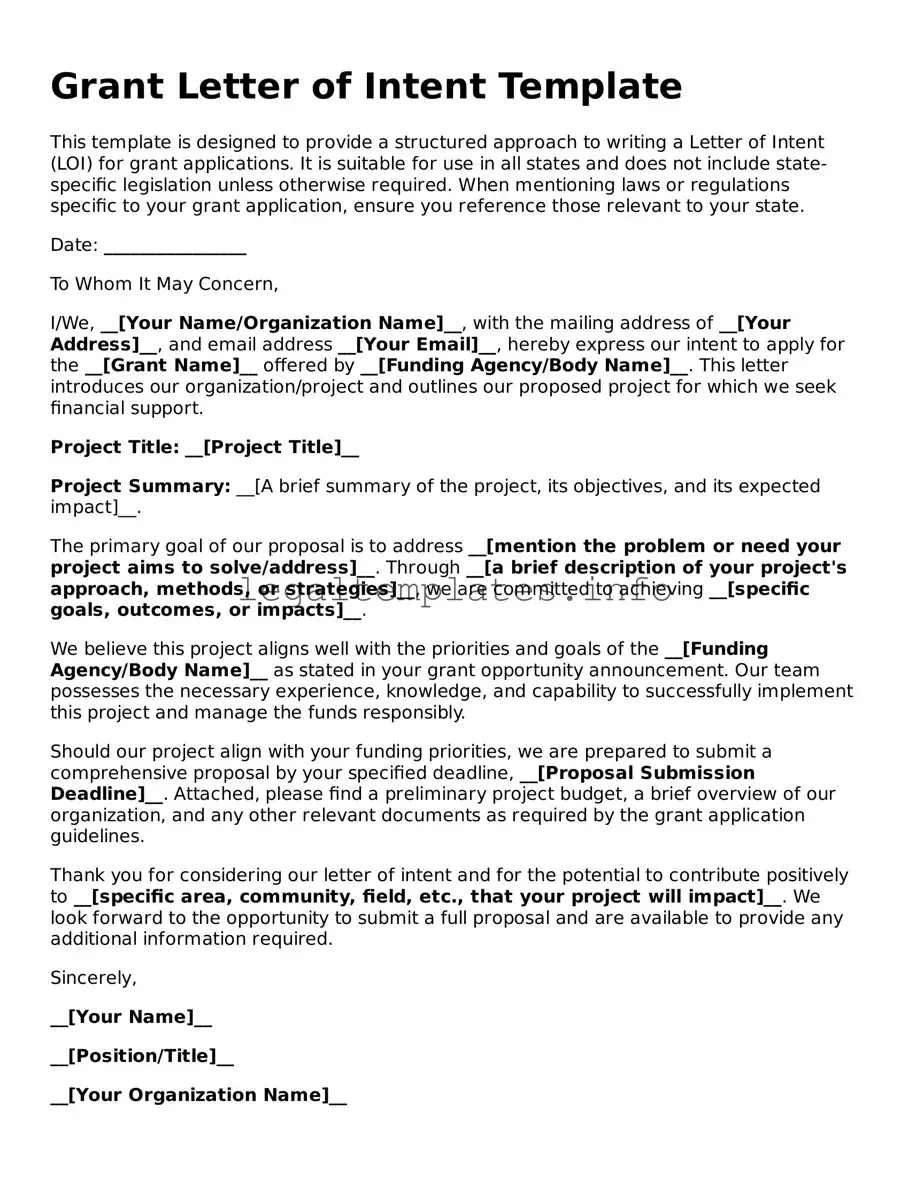The Grant Letter of Intent form shares similarities with the project proposal document. Both serve as a precursor to more formal, detailed submissions and aim to convince or inform the reader about the potential of a given project or initiative. The key objective is to outline the scope, relevance, and objectives of the proposed efforts succinctly, paving the way for further discussion or investigation. They act as an introduction to the comprehensive plan, often necessary to secure approval or funding.
Similar to a research abstract, the Grant Letter of Intent summarizes key points and the significance of the proposed work. Both documents are concise, aimed at capturing the interest of the audience quickly, and provide a snapshot of what is to come in the detailed documents. While a research abstract accompanies a completed study or paper, the letter of intent is used at the initiation stage, setting the stage for potential research or project development.
The concept paper, much like the Grant Letter of Intent, serves as an initial outline of a proposed project, intended to gauge interest or support from potential stakeholders or funding bodies. Both documents highlight the project’s objectives, its significance, and the prospective outcomes or benefits. The essential purpose here is to engage the target audience’s attention and demonstrate the worthiness of the project for consideration or funding.
Comparable to a business proposal, the Grant Letter of Intent outlines a clear value proposition and seeks to persuade the reader of the viability and necessity of a project. Both documents are persuasive in nature, detailing the problem statement, proposed solution, and expected outcomes in a manner that emphasizes their contribution and potential impact. They are critical tools in the initial engagement with potential funders or partners, outlining the scope and aims of the proposed initiative.
Similarly, to a statement of purpose, the Grant Letter of Intent focuses on the intent and objectives behind proposing a project or seeking funding. Both documents provide a narrative or argument that supports the need and utility of the proposed endeavor, setting a foundation for further exploration or discussion. Typically, they serve to articulate the vision and strategic direction of the proposed work, aiming to align it with the goals or interests of the audience.
The letter of inquiry is another document akin to the Grant Letter of Intent, often used in the early stages of seeking funding or partnerships. Both serve to introduce a concept or project and request support or collaboration, yet do so in a preliminary fashion without the need for extensive detail. The goal is to spark interest and invite further conversation or invite a more detailed proposal submission based on the initial impression these documents provide.
The executive summary, found in comprehensive reports or proposals, shares a common purpose with the Grant Letter of Intent by succinctly highlighting the most critical aspects of a larger document for quick reader comprehension. While serving different stages of the presentation or funding process, both aim to captivate the audience's attention and provide a clear, brief overview of the objectives, significance, and proposed actions.
Pre-proposal documents are often submitted in the preliminary stages of project development, similar to the Grant Letter of Intent, to sketch a project's outline and gauge initial reactions or approval before committing to a detailed proposal. These documents share the aim of laying a foundation for a project, highlighting its feasibility, and seeking early support or feedback from potential stakeholders or funders.
The funding request letter, much like the Grant Letter of Intent, is crafted to seek financial support, laying out the rationale and necessity for funding in a concise and compelling manner. Both documents must clearly articulate the purpose, goals, and significance of the funding request, aiming to convince the reader of the project's value and its alignment with the funder's objectives.
A memorandum of understanding (MOU) can also be paralleled with the Grant Letter of Intent in terms of their preparatory nature. Both documents signify a preliminary agreement or intention between parties to engage in further discussion or collaboration. Although an MOU is typically more formal and may involve commitments or understandings between parties, it similarly sets the stage for subsequent, more detailed agreements, much like the intent letter initiates the grant application process.
